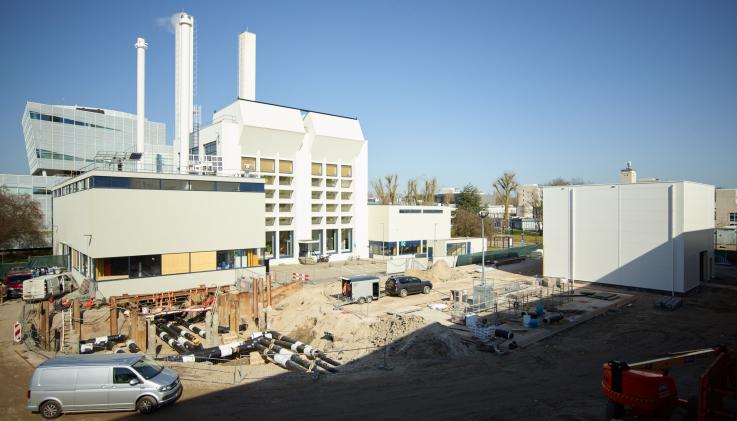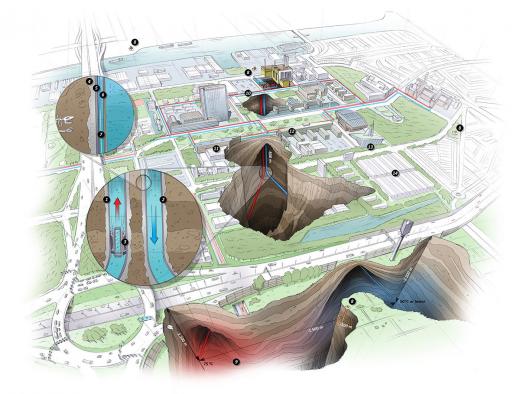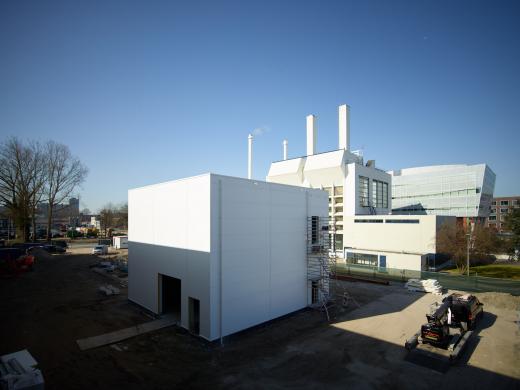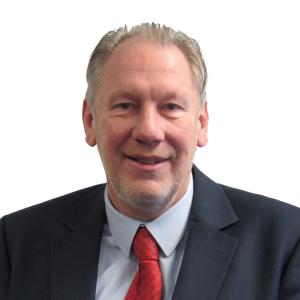Making a significant contribution to a sustainable geothermal project at TU Delft
At a crucial moment in the transition to sustainable energy, research and industry have come together in a unique geothermal project on the campus of Delft University of Technology (TU Delft). Work is underway to build a geothermal energy facility that will provide sustainable heat while being connected in real-time to a large scientific research and educational programme at TU Delft. The advanced control system for the geothermal installation is being developed by electrical system integrator Alewijnse on behalf of Geothermie Delft - a consortium of Aardyn, TU Delft, Energiebeheer Nederland, and Shell.

A step forward in the energy transition
The urgency of the energy transition is growing daily. According to the Paris Climate Agreement, the EU must reduce greenhouse gas emissions by 55% by 2030, compared to 1990 levels, and strive for climate neutrality by 2050. Geothermal energy, a CO₂-low alternative to natural gas, will play a key role in this. The technology is promising and has already made a promising start in the horticultural sector. The next step is large-scale application in the built environment.

A unique opportunity
Geothermie Delft is taking an important step forward in the energy transition. In this project, a geothermal source is being installed that will not only provide sustainable heat to all residents and visitors to the university campus, but also to a large part of the city of Delft. It also offers a unique opportunity to further develop scientific knowledge of geothermal energy in a complex urban environment.
In geothermal projects, hot water is pumped from deeper layers of the Earth, around 2.5 km deep. Through heat exchangers, the energy from the geo-water is transferred to the heating network, which delivers heat to the end users. After the heat transfer, the cooled geo-water is returned to the deep subsurface via a second well.
To ensure the energy flows efficiently, Alewijnse is designing all the automation systems and electrical installations, including the control panels, for the operation of both the above-ground geothermal installation and the connected heat distribution network. This encompasses the extraction of geothermal heat together with the control of the heat exchangers, degassing installations, production and injection filters, transport and injection pumps and energy distribution to the end users, and finally the return of the water to the injection well. The engineering phase has already been completed and the project is expected to be delivered in November 2025.
The control system is based on an advanced PLC/SCADA solution built with Siemens and Cimplicity technology. The installation is flexible and user-friendly, providing extensive data on parameters such as temperatures, pressures, levels and flow rates. Through intuitive dashboards, real-time information and the status of the installation can be easily viewed by all users, including operators, end customers and researchers.
Alewijnse project manager Jean-Pierre Gerrits
Successful from the start
“Alewijnse has been successfully collaborating on geothermal projects for ten years,” continues Gerrits. “That’s quite a long time for this emerging market. In 2015, we started our first project together with VB Geo Projects and GeoMEC-4P Realisatie & Exploitatie in Vierpolders, for a sustainable heat transfer installation for greenhouse businesses in the region. Before that, such solutions were controlled by climate computers. We implemented new control software that allowed much more flexibility, better visualisation, and more extensive reporting.”
Opening the door to more
The latest project for Geothermie Delft opens the door to more,” concludes Gerrits. “We are continually expanding our network and our brand awareness is growing. We are proud that, as Alewijnse, we are able to contribute to this essential local form of heat supply that will play an increasingly important role in the national energy mix of the future.”

